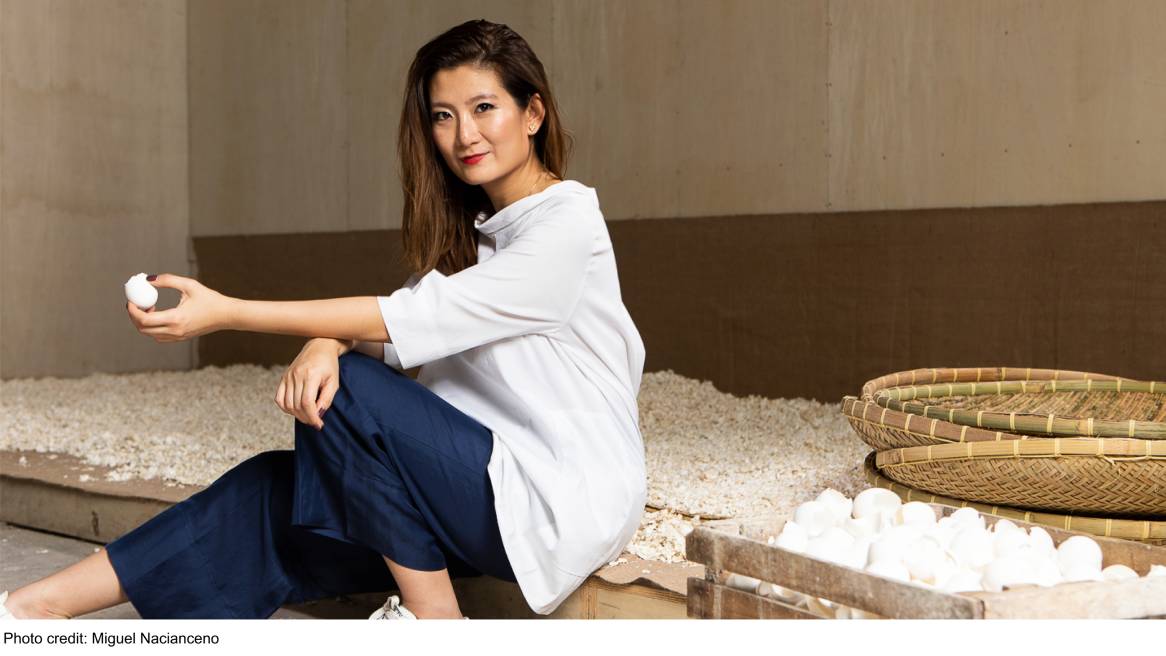A Conversation with Elaine Yan Ling Ng
Architecture and design author and writer Catherine Shaw talks to textile weaver and designer Elaine Yan Ling Ng, and Founder and Design Director of The Fabrick Lab, who explains how she is reinventing waste eggshell as eco-friendly wall tiles and why Tetley’s builder’s tea is her favourite.
Elaine, you always seem to be carrying a heavy bag. Do you carry your work around with you?
Yes, when I first started working I had a trolley bag with me at all times, stuffed full of interactive samples, a UV pen, an Arduino and some shape memory actuators just in case there was an opportunity to show my designs. Nowadays my Louis Vuitton Neverfull canvas tote holds my laptop, chargers, at least two notebooks, a scarf and always some chocolate. I like to be ready for anything and everything.
Textiles are your lifeblood. Do you have a favourite item of clothing?
My grandpa’s cardigan. He bought it on one of his first visits to England, before I was born, and I remember him wearing it in his office when I was a child. It is a British brand called Jaeger, and cashmere, and I’ve worn it so much it has holes.
Do you have a signature scent?
Le Labo’s Bergamote 22. It was specially developed for the Park Hyatt Bangkok, and I buy their candles for my home too.
Do you have a favourite space at home?
I like to sit on my balcony, which overlooks the sea. I eat breakfast and drink a cup of tea watching gigantic container ships float past.
What do you do for inspiration?
I am fascinated with traditional crafts, like a colourful toy I recently found in Chongqing. It’s frustrating not being able to feed my soul through travel. I have started feeling quite digitally intoxicated.
Have you found a sanity saver during COVID?
Pre-mixed Catmurai cocktails made by Nick Tse and Ayako Miyake of Bar Buonasera in Hong Kong. Ayako draws wonderful labels featuring a cute cat. And they deliver, so I also send them as gifts to friends.
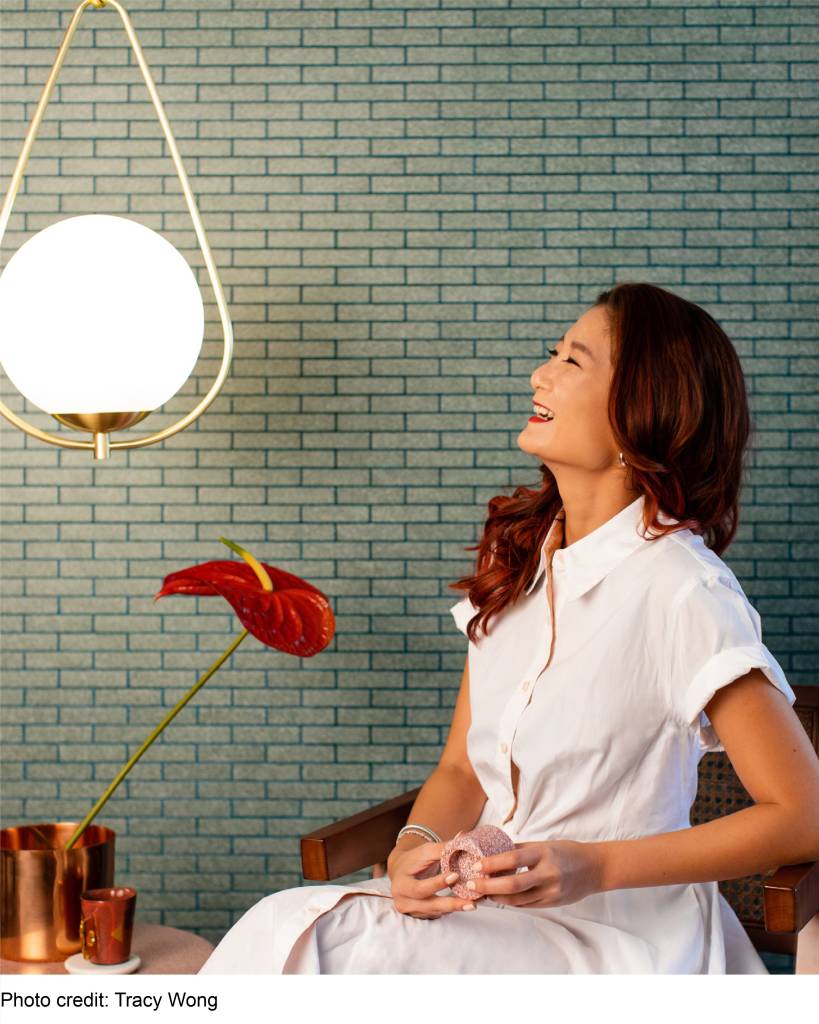
Which is your favourite design era?
Art Deco. It’s very defined and geometric and influenced everything from architecture and fashion to cars and ocean liners – even vacuum cleaners. My favourite Art Deco building is in Shanghai’s Remin Park and was constructed in 1933 as a racecourse clubhouse.
What has been your most surprising creative experience?
In 2006, doing research at Central Saint Martin’s library I came across a book on shape memory polymers and their application to smart textile products written by Jinlian Hu and Xiaoming Tao, professors from the Institute of Technology and Clothing at the Hong Kong Polytechnic University. I was fascinated by the properties of this unknown fibre, and when I got in touch with them they were friendly and supportive. They even sent me samples. I explored how a fibre could be electrified and move and have its own memory for retaining its original form, which led to my 2012 TED Talk, Naturology, Secret Life of Textiles in Edinburgh. Interest in the talk inspired me to start my own studio.
What is the best creative gift you’ve made recently?
Last year when I was in Hong Kong and my husband was in Mainland China, I painted his initials on paper with my signature organic form and then embroidered them in very fine gold thread to create a neon collage (below). The calligraphic form mimics the left and right sides of the heart and was a way to send him my love.
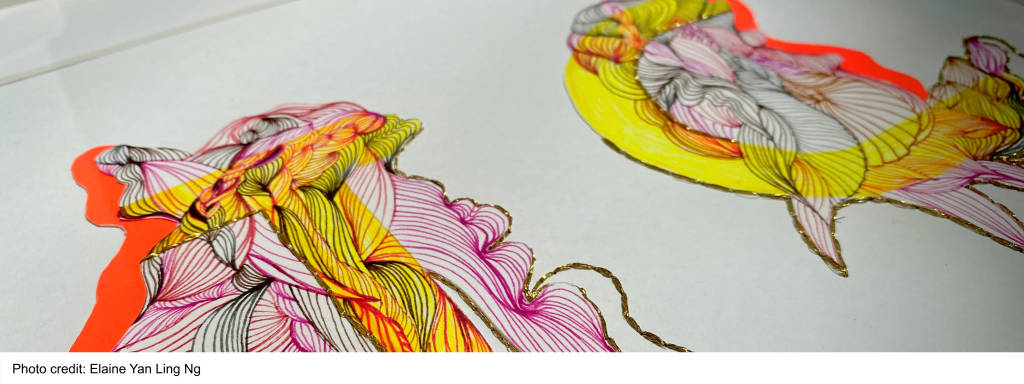
Do you have a favourite book or podcast?
My favourite book is ‘Gods and Kings: The Rise and Fall of Alexander McQueen and John Galliano’ by Dana Thomas. Their struggles feel very real to me. I listen to the ‘Material Matters with Grant Gibson’ podcast regularly. He interviews designers, makers and artists about their relationship with a material or technique, for example material researcher Alice Potts about her work with human sweat and turning food waste into bio-plastic.
Favourite food?
Full-fat Heinz mayonnaise. I even take it with me when I travel.
What do you always take home?
Now that I no longer live in London, I always bring back Tetley teabags. I love the simple everyday Tetley Original Tea that the British call builder’s tea, because it makes a good, strong cuppa.
Is there any product you wish you had designed?
A modular housing system for the homeless: I often use 3D printing, and recently began working with bio-waste materials, so feel it’s time to apply these practically for wider social benefit.
Whom do you most admire in the world of design?
Olafur Eliasson. His work is so diverse and unrestricted by time or place. He documents the whole process from concept and prototype to installation. One of my favourites is ‘Little Sun’, a solar LED lamp that gives clean, affordable light to people living without electricity.
Any recent discoveries in China?
Tsutaya Books which recently opened in a converted colonial military hospital in Shanghai. When I was there they had a solo exhibition of Japanese artist Kohei Nawa.
Do you collect anything?
I collect ornately decorated textiles, and especially love Art Deco beaded dresses. They are so joyful. I love coffee table books. My latest purchase is ‘Archigram: The Book’ showing Archigram’s iconic architectural works.
The gadget other than your phone you couldn’t do without?
My gua sha ox bone stick which I bought from a street stall in Ciqikou Old Town in Chongqing. It is a traditional tool used in Chinese medicine to massage skin and has a firming, lifting effect which helps reduce puffiness and tension.
Most memorable commission?
My Sundew sculptural installation for Swarovski (below), shown at Art Central in 2016. Its multisensory, sound-activated, handmade textiles resembled carnivorous plants.
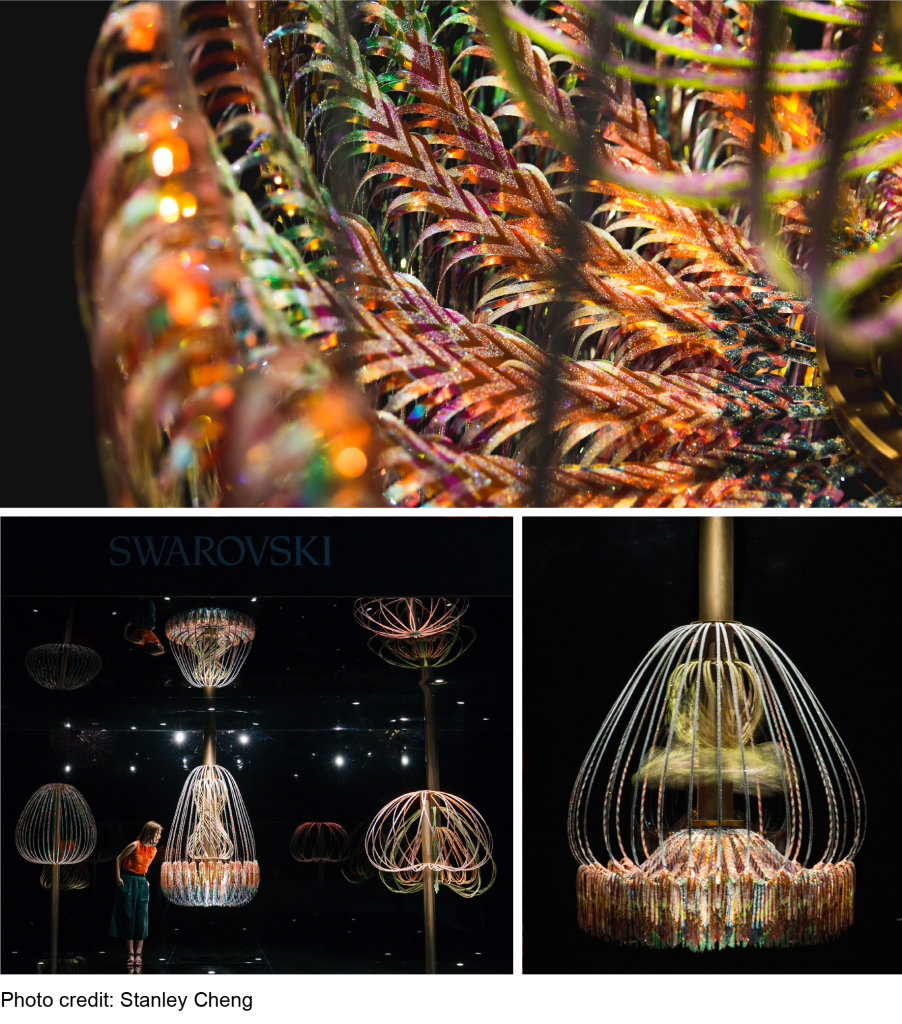
What do you listen to when you work?
I listen to Heart FM Radio and BBC Radio 1. I really like Singaporean electronic music singer-songwriter Jasmine Sokko’ s quirky beat and mix of English and Mandarin lyrics.
What is the best design advice you’ve been given?
Professor Carole Collet, who leads Design for Sustainable Futures at Central Saint Martins where I studied in London said in a corporate job we should focus on what we are doing and not work on personal projects. That splits our concentration when we should be learning and maximising output. So, when I got my first job, I put my own work aside. I quickly realised that as a junior designer it is difficult if you are not completely dedicated. There is so much to learn.
“Innovation is about a smart way of answering a question. Creativity does not have to offer a solution; it can be experimental.”
What do you consider is the difference between creativity and innovation?
Innovation is about a smart way of answering a question. It doesn’t have to be a new way, but it must be solution-based. Creativity does not have to offer a solution; it can be experimental. I believe that being creative is more important, because you can replicate innovation, but creativity has a personal character.
Is it possible to remain fresh and innovative while promoting a brand?
Yes. Being creative is about your personal identity and you should not outshine the brand. Your job is innovating for them, and that goes with creativity, but with a focus on brand identity. My work with Nature Squared is a good example. As Chief Material Innovator I have freedom to explore smart solutions to existing materials like waste eggshell. Nature Squared are very well known, and have been at the forefront of the luxury interiors world for two decades. They came to me for an innovative, versatile solution that would enable them to use even more waste, and we have just launched a collection of handmade tiles that can be ordered in quantity for a wide portfolio of interior projects.
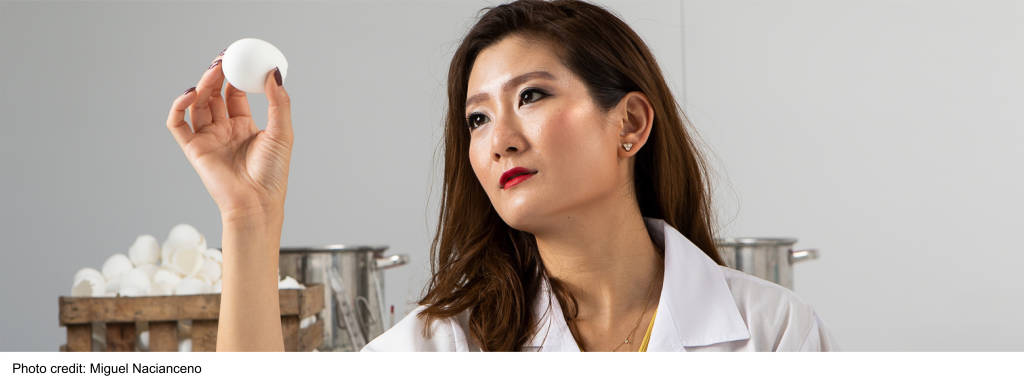
If you weren’t a designer, what would you do?
I would love to be an architect, but when I was young I wanted to own a haberdashery shop.
What are you working on right now?
I am currently studying Sustainability Management in Leadership at Cambridge University, which helps me communicate with a wider audience. I think it is essential not to focus on Tier One cities in China where people have access to sustainable solutions. I hope to use my new skills to influence Tier Two and Three cities. I never went to a conventional school, but the course offers access to incredible archives and helps me with clients like Nature Squared. As a material consultant, it is not just about aesthetics. I want innovative and practical solutions.

